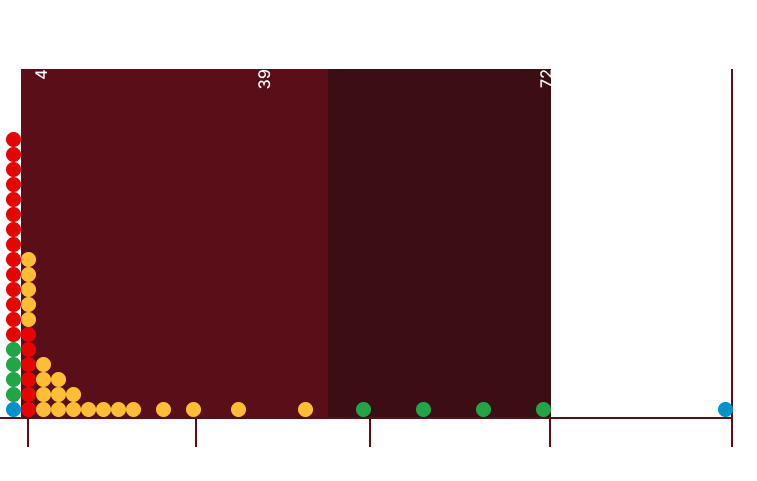Shift in Hacker Tactics
In the fourth quarter, there was a notable shift in hacker tactics, with a marked increase in mass Distributed Denial of Service (DDoS) attacks, mainly targeting Dubai and other areas in the UAE. This change involved reducing the number and intensity of targeted DDoS attacks on individual organizations in favor of widespread, large-scale attacks. Notably, this period also recorded the most prolonged DDoS attack ever, enduring an unprecedented duration of 9 months. This strategic shift in cyberattacks underscores the evolving nature of cyber threats and highlights the need for robust digital defenses, especially in high-target regions.
According to a report by The National News, the UAE’s Cybersecurity Council issued warnings to both public and private sectors, urging them to stay vigilant against potential cyberattacks. This response was necessary due to the observed rise in malicious activities targeting the nation’s digital infrastructure and assets.
The council emphasized the importance of being prepared for cyber threats and called for increased cooperation and coordination between government and private agencies. This includes proactively sharing data with relevant authorities to address malicious cyber activities as they arise. The council also stressed the need for vital sectors to activate protection systems and cybersecurity policies while increasing awareness of suspicious cyber activities.
Furthermore, the UAE has effectively thwarted cyber threats, successfully blocking over 71 million attempted cyber attacks in the first three quarters of the year alone. Despite this, the head of the country’s Cybersecurity Council, Dr. Mohammed Al Kuwaiti, called on organizations to remain vigilant against hackers. This statement reinforces the ongoing challenges posed by cyber threats and the necessity for continuous efforts in cybersecurity.
The evolution of DDoS attacks in recent years can be structured into several key observations:
- Increase in Attack Frequency: In the fourth quarter of 2023, there was a significant uptick in the frequency of DDoS attacks, doubling compared to the second and third quarters. Infoblox reported around 43,000 attacks per month during this period.
- Change in Attack Power: Although the frequency increased, the average power of each attack decreased substantially, dropping from 2.7 Gbps to just 0.8 Gbps.
- Peak Attack Power: The maximum power of DDoS attacks reached 290 Gbps per second in this quarter, matching the levels seen in the second quarter of 2022.
- Historical Perspective and Trends:
- In 2019, the average DDoS attack measured about 424 Mbps, with some reaching 100 Gbps.
- By 2022, the average attack size had risen to 1.2 Gbps, showing a notable increase over three years.
- In 2023, the average stands around 1.3 Gbps, indicating a slight increase from the previous year.
- Concentration Around Median Values: There has been a shift from the more sporadic and random DDoS attacks of 2019 to a more structured and systematic approach in the subsequent years. The attacks are now more consistently centered around the median values.
This data indicates an increase in the frequency of DDoS attacks and a strategic shift in how these attacks are conducted, reflecting the evolving landscape of cyber threats.

Experts interpret the shift in DDoS attack strategies in the UAE as a move away from targeted attacks on specific organizations to a broader approach aimed at impacting as many Emirati companies as possible. This change is particularly evident in Dubai and Abu Dhabi, which have become prime targets. In Dubai, the average number of attacks on a single organization increased by 18 percentage points. At the same time, it rose by nine percentage points in Abu Dhabi compared to the third quarter of 2023. This trend underscores a significant change in the region’s objectives and tactics of cybercriminals.

In 2023, the service documented an unprecedentedly long DDoS attack that persisted for over nine months, from March to November. This period saw a significant rise in DDoS attacks targeting specific sectors, with the telecom, public sector, and IT industries being the most affected. The frequency of attacks on individual organizations in these sectors has tripled each month since the quarter began. Additionally, there was a 25% increase in DDoS attacks on the construction industry within the same timeframe, indicating a broadening of targets by cyber attackers.
In the fourth quarter, there was a noticeable shift in DDoS attack strategies, with a decrease in intensity and power but an increase in quantity. This suggests that malicious actors are optimizing their resource allocation and closely monitoring the effectiveness of their attacks. If an attack doesn’t yield the desired impact and the target organization proves well-protected, attackers quickly abandon the effort and move on to the next target. This strategic shift points to a trend focused on maximizing the volume of attacks rather than their potency. Forecasts indicate that by mid-2024, the frequency of DDoS attacks could increase by at least 1.6 times compared to the numbers seen in the summer.
The traffic monitoring and DDoS protection service plays a crucial role in combating the most sophisticated and large-scale attacks, ensuring that internet resources remain accessible to users at all times. Its primary strength lies in its layered approach to protection. This multi-tiered strategy secures the communication channels and safeguards the company’s network infrastructure. By employing this comprehensive defense mechanism, the service provides robust protection against various forms of DDoS attacks, maintaining the integrity and availability of network resources.
Conclusion
While the UAE has successfully thwarted millions of attempted cyber attacks, Dr. Mohammed Al Kuwaiti’s reminder to remain vigilant highlights the ongoing threat posed by cyber adversaries. The evolving landscape of DDoS attacks, characterized by increased frequency and changes in attack dynamics, emphasizes the importance of adaptive cybersecurity measures.
The shift towards mass DDoS attacks targeting key sectors underscores the necessity for comprehensive cybersecurity strategies. Organizations must invest in advanced traffic monitoring and DDoS pro
